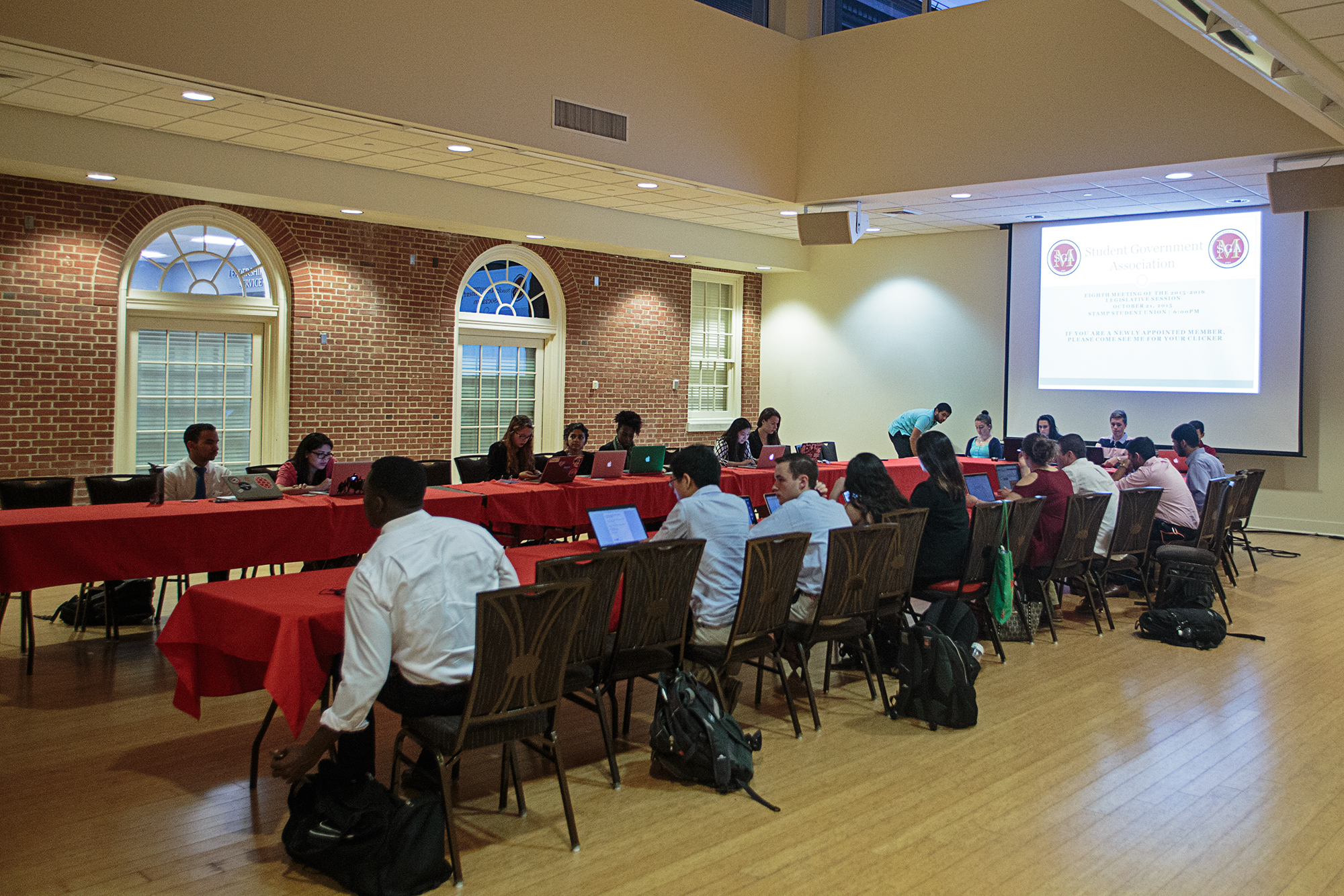The SGA voted unanimously Wednesday to pass a resolution encouraging the University of Maryland’s administration to raise the minimum wage for workers on this campus to match Prince George’s County’s minimum wage.
The vote was 23-0 with no abstentions.
This university currently abides by the Maryland minimum wage of $8.25 per hour, rather than the county’s minimum wage of $9.55 per hour.
“Since we’re a state entity, we follow the state minimum wage guidelines,” said Aiden Galloway, the Student Government Association’s speaker of the legislature.
Christopher Bangert-Drowns, a Student Labor Action Project organizer, did not enroll in classes this academic year in order to work more hours at his job in concessions on the campus. He will take classes at this university as a junior economics major in the fall, he said.
The low wages for jobs on the campus make it difficult to balance schoolwork and paid work, Bangert-Drowns said.
“It doesn’t make sense to ask students to enhance their education, when you’re paying them $8.25 an hour, and also be successful in classes,” Bangert-Drowns said. Students “literally have to choose between food and textbooks.”

The University of Maryland currently abides by the state of Maryland’s $8.25/hr minimum wage rather than the $9.55/hr rate recognized by the county.
Nearly 80 percent of college students hold down jobs while attending school and the average student works 19 hours per week during the school year, according to a 2013 Citigroup national study.
Several other universities — including San Francisco State University, the University of California at Berkeley, the University of New Mexico in Albuquerque, the University of Washington and the University of Illinois at Chicago — face a similar wage differential on their campuses.
North Hill representative Kevin Johnson co-wrote the bill with Ellicot representative Mihir Khetarpal after SLAP approached them the week before spring break. The bill was first introduced to the legislature last week.
“The college needs to embrace the fact that it’s part of the community of P.G. County and not an ivory tower on the hill,” said Johnson, a sophomore government and politics major.
Freshman Lillian Hallmark said she received $8.75 per hour when she began working at Potbelly Sandwich Shop on Route 1 in August, when the county minimum wage was lower.
“Having our address in P.G. County is not a separate part of our identity as a school,” the biochemistry and physiology and neurobiology major said.
The Maryland General Assembly passed a bill in April 2014 raising the state minimum wage gradually to $10.10 by 2018. The county, on the other hand, voted in 2013 to raise its minimum wage from $7.25 to $11.50 over the course of four years.
There was an effort in the General Assembly this legislative session to raise the minimum wage to $15 by 2020, but the bill died in committee.
SLAP met with university President Wallace Loh in February, Bangert-Drowns said, but the meeting was inconclusive. SLAP is encouraging the university to stop waiting for a mandate from the state to raise the minimum wage.
Despite student support for the increase, SGA President Patrick Ronk noted that because this university relies on state funding, it might not be feasible to increase wages for workers on the campus unless change first occurs on the state level.
“While this is very well-intentioned, it just isn’t very practical in the current fiscal situation,” Ronk said. “The reason this won’t happen is because the university really can’t afford to pay for something like this. They have a pretty significant structural deficit they operate on from year to year.”



